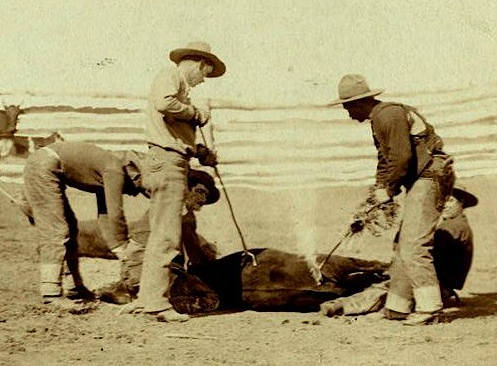When a colleague offered to make me one of his famous-person
portraits as a retirement gift, he was already prepared for me to pick Randolph
Scott as a subject. The two of us had spoken often of Scott’s cowboy roles. I
remember the day he encouraged me to see Seven Men From Now (1956), a Budd Boetticher western that continues to
be one of my favorites.
A lot of western fans will pick John Wayne as their
consummate cowboy actor, but Scott has been a personal favorite of mine for a
long time. He kept his chiseled good looks to the end of his career, not to
mention his lean, six-foot-two bearing, always walking and riding with an easy,
square-shouldered grace. The craggy face as he aged suggested a lifetime spent
in the sun and wind. It was a western face.
I’ll give Wayne his grin and his warmth when the role called
for them, but Scott could also be coolly stern and reserved in a way that could
bring a chill to a scene. The rage behind his steady gaze in Seven Men From
Now gives a depth to his character that you
might only see in Clint Eastwood, for whom it has been a trademark.
Scott didn’t just play himself in his westerns. He was
equally good in different kinds of roles. In Buchanan Rides Alone (1958) he’s the man who gets by with a smile and a
wry comment when he’s outnumbered by a town full of miserable crooks. You
believe him in roles like this that call for his character to stand up for himself,
alone and with no one else to depend on
—
but often with people depending on him, as in another Boetticher film, The Tall T (1957).
In The Man Behind the Gun (1953), he’s a man of more than one identity, pretending to be an
easy-going tenderfoot while he’s really on a mission to stop a vicious plot to arm
secessionists. In Riding Shotgun (1954),
he is a fugitive from a lynch mob, wrongly believed to have held up a stagecoach. And before his
retirement from the screen, he left fans with a memorable performance as an
aging ex-lawman in Sam Peckinpah’s classic Ride the High Country (1962).
So that’s my cowboy western hero for National Day of the
Cowboy. Fortunate for me, he made a whole bunch of westerns, and I look forward
to seeing them all, and then seeing them all again.
Image credit: Artist, Bill Feuer
Coming up: Tom Lea, The Wonderful Country (1952)








